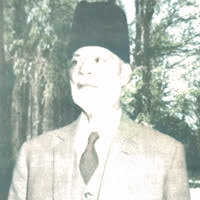A number of nationalist Muslims of Punjab, mainly religious leaders, called themselves “Ahrars” who organized Majlis-i-Ahrar-i-Islam. They were former members of the provincial branch of the All India Khilafat Committee who made the formal announcement after the anti-Muslim Nehru Report in December 1929. It does not mean that the Ahrars were anti-congress. Actually they were pro-congress as the slogan of ‘complete independence’ suited the genesis of the Ahrars. The Ahrars were mainly from lower middle class and they supported the Congress sponsored ‘Satyagarha’ movement through civil disobedience in the Punjab and by courting arrests.
The first Ahrar conference convened on July 31, 1931 declared to achieve independence for the country, make better communal relations among different communities, establish an Islamic system in the country and uplift the Muslim masses to acquire their lost glory of the past. The Ahrars got popularity within short time due to their exploitation of local issues, with which they could easily arouse sentiments of the people. Some issues were, of course, genuine like the issue of J&K for which the people were always ready to join their protest against the oppressive rule of the Hindu Raja in 1931. An issue, which gave them more eminence, was their anti-Ahmadis stand. It gave them an ample opportunity to attract the Muslim population. The Ahrars opened their office at Qadian, the headquarter of Qadianis, in the middle of 1933 and succeeded to turn the Punjabi Muslims against the Ahmadis. The Ahrar campaign was also directed against Sir Mohammad Zafarullah Khan president of the All India Muslim League during 1931 and Pakistan first foreign minister.
The Ahrars, for most of the time, were involved in agitation politics and frequently made speeches to build up their pressure. The leaders were considered to believe in keeping the masses occupied with one issue or another. When the issue of Shaheed Ganj Masjid was exceedingly exploited by the Ahrars and led to agitation, Quaid-i-Azam lost no time in proceeding to Lahore to produce an atmosphere of amity and goodwill. After an unsuccessful alliance with the Muslim League in 1936 the Ahrars gradually drifted away from the mainstream of Muslim politics. Sometimes they sometime rushed to the Congress camp and sometimes liked to follow an independent course. The party claimed its all India Muslim organization but its influence was confined to the Punjab and NWFP. The strength of the party did not depend on membership but it was due to the gifted orators like Attaullah Shah Bukhari, who made the audience spellbound and so easily attracted the masses.
In 1940 Ahrars passed the ‘Hukumat-I-Ilahiyya’ resolution to regain its lost prestige and popularity but did not succeed. They turned against both League and Jinnah and addressed the later as ‘Kafir-I-Azam’ (the Great Infidel). Since the party had no organizational structure, they failed to work at grass-root level and enjoy the people’s support like other organizations. That is why it soon collapsed after Pakistan came into being.
This article was last updated on Monday, Jan 01, 2007






